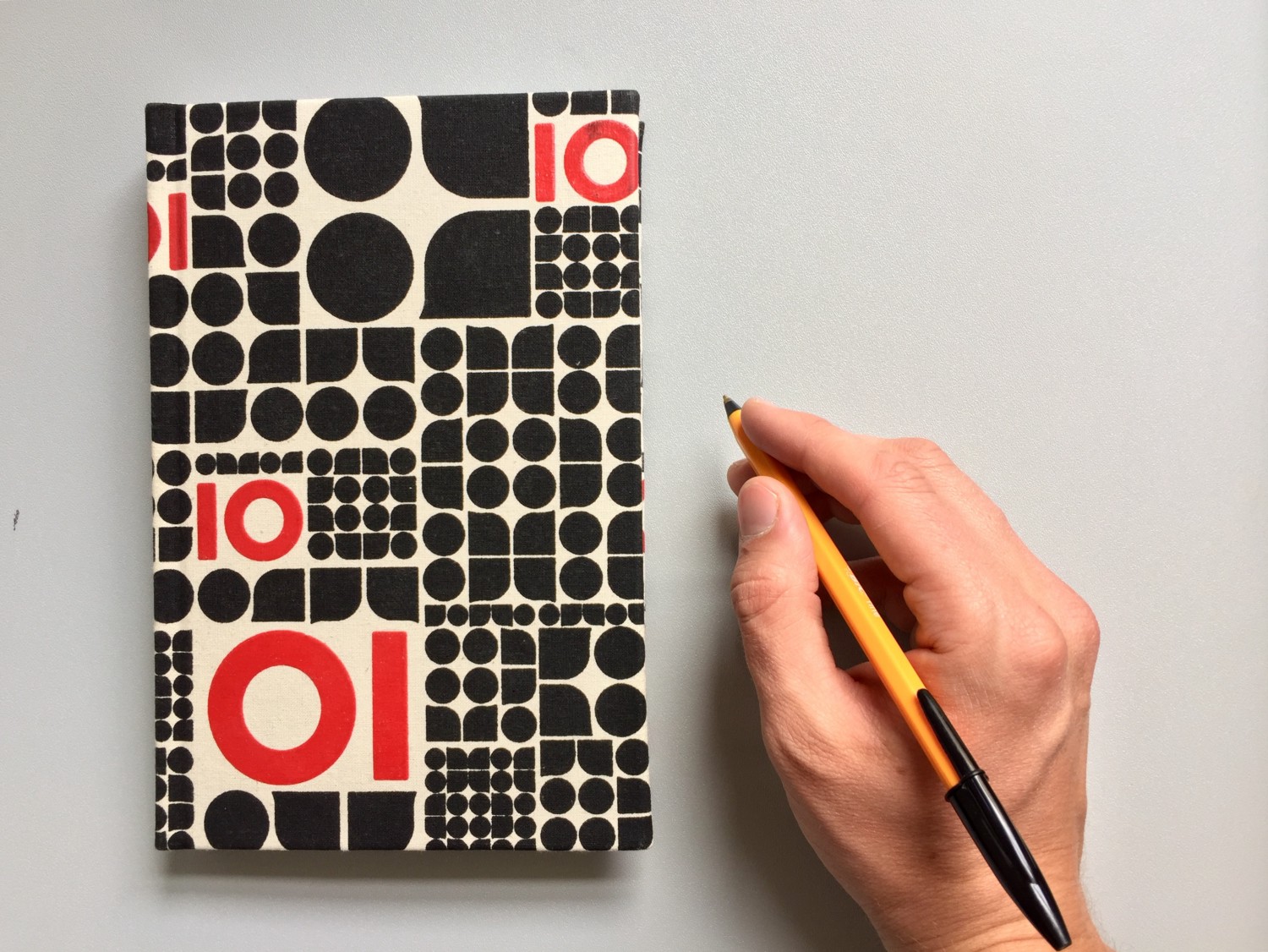Want to become physically, emotionally and mentally healthier?
Then, journal.
Science shows that people who journal feel holistically better than those who don’t.
That’s why I write a reflection every night. It takes just a few minutes. It’s called “expressive writing,” and is one of the most beneficial forms of prose. I’ve taken techniques from Lewis Howes’ gratitude journal, Benjamin P. Hardy and James Altucher to create this routine.
The journal is three simple steps:
1. Write three things that you are grateful for from the day.
2. Jot down one area of improvement.
3. List three objectives you want to focus on tomorrow.
Here’s how and why you should do it.
Step 1: Write three things you are grateful for.

Self-help guru Tony Robbins notes that expressing gratitude is one of the greatest things we can do to create joy in our lives. By being thankful for what we have rather than longing for what we don’t have, we become more appreciative. Robbins commands:
“Commit in your heart and soul to find something to appreciate in every moment. Then you will experience the real wealth of ongoing happiness!”
This journal routine focuses you on what you are grateful for from the previous 24 hours, ending your day on a high note.
The length and subject of these passages may vary. Some may be one word. Others may be a page. Some may focus on people and events. Others may simply focus on a meal.
If you forget to write it down that night, you can always do it the following morning.
Here’s an example from yesterday.
May 22
Journal
3 Things I’m Grateful For
1. Wow. Today was a productive Monday. Got to work on time and finished the application.
2. Lunch with Ryan was great. He really knows marketing.
3. In the second part of the day, I was able to finalize the deal with _________, and then workout at Glenarm. That felt awesome.
Super quick. Super simple. Also, by writing these thoughts on paper, I’m giving myself much needed separation from technology before bed. This facilitates falling asleep faster. That’s simply personal preference.
Mic.com notes that either writing with pencil and pen or by computer are beneficial in their own unique ways:
Physical pen-on-paper writing is especially effective in activating the “reticular activating system” region of the brain that filters and focuses information. But don’t worry, bloggers: Studies have shown that blogging triggers dopamine release, a chemical that helps regulate emotional responses and improve mood.
STEP 2: One Area of Improvement

“If there is no struggle, there is no progress.”
Frederick Douglass
Progress is essential to happiness. If you’re not growing, you’re dying. That’s why it’s important to continually improve. By focusing on how we can improve, we become better, and move closer towards achieving our goals.
In this section of the journal I like to simply note one area of the day that I can improve. Sometimes this is something I view as horrible, and causes me to feel shame. Other times it’s something minor, yet still significant. Then, I usually like to remedy it with a quick solution.
Here’s my journal entry from that same day.
1 Area of Improvement
I really feel like I’m getting to the point where I can hire some people. ______________ would be the first person I’d hire. Then, I’d get some interns. We could also hire people in the developing world.
By finishing with a resolution we frame our shortcomings in a positive light, allowing us to remedy them.
Feel free to incorporate anything traumatic that happened throughout the day. This type of writing is therapeutic, and helps individuals conceptualize and overcome problems.
A 2005 study published in Advances in Psychiatric Treatment noted participants who wrote about stressful events were less likely to get sick, and recovered from their trauma faster than those who didn’t write.
STEP 3: 3 Objectives for Tomorrow

I don’t focus on what I’m up against. I focus on my goals, and try to ignore the rest.
Serena Williams
In my previous article, I emphasized how great leaders are often great planners. By incorporating a bit of planning into our nighttime journal, we get the wheels turning for what we want to accomplish the following day.
A word of warning here: I found that if I write too much about what I want to do the next day, I have trouble falling asleep. My mind starts to think it’s morning time, and problem solving time. Thus, I try to limit my objectives for tomorrow to just three brief goals.
For example, my objectives on that same day’s journal read
3 Objectives for Tomorrow
1. Work out at Glenarm.
2. Eat, drink and toil joyfully.
3. Set up plans with friends.
Here’s what the journal looks like as a whole (with some business sensitive details omitted).

So that’s it. It’s a super fast process, and leaves me feeling grateful and ambitious.
*****
Feel free to connect with me through the links below.
[email protected]
Facebook: facebook.com/nickm.brown
Instagram: @nickbrownco
Twitter: @nickbrownco
Snapchat: brownybite
You may also be interested in my previous article: “This 9-minute Journal Routine Helps You Seize the Day.”
If you’re interested in receiving more articles like this one, then follow me here on media.
If you enjoyed this article, please share it with your friends and followers.
Thank you for reading!
Originally published at medium.com


